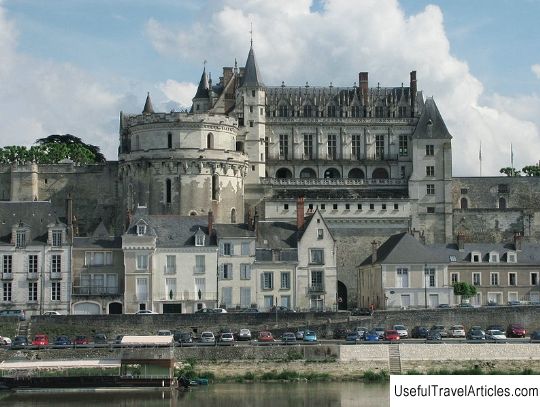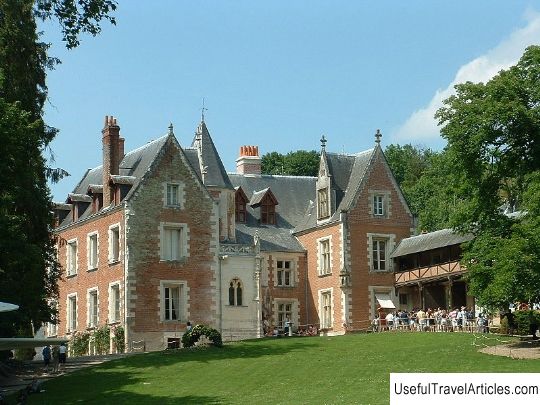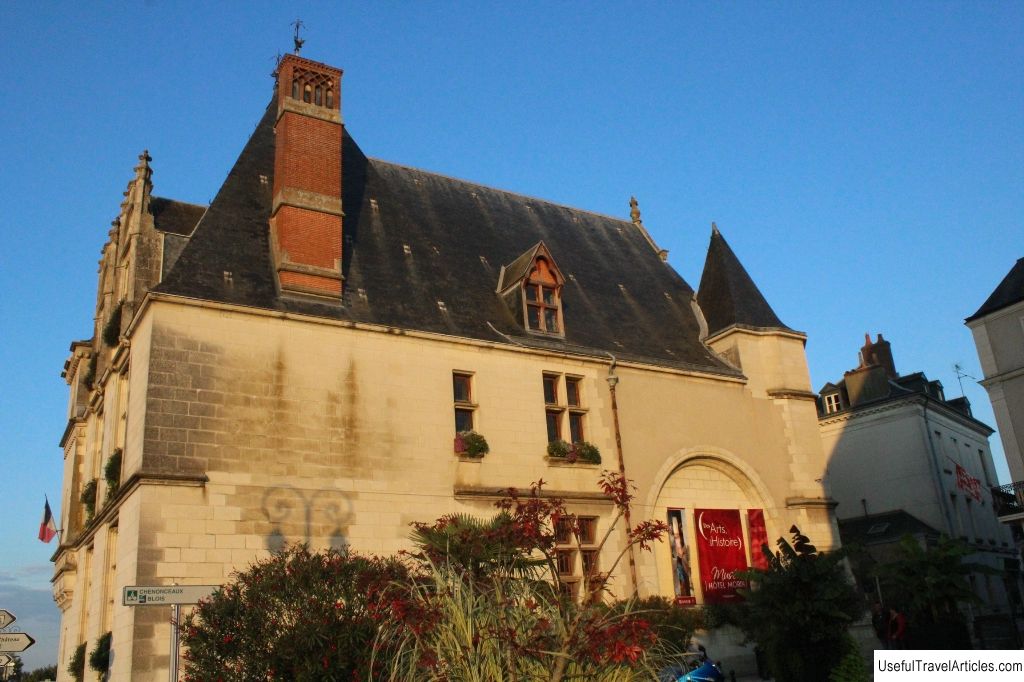Chateau d'Amboise description and photos - France: Amboise
Rating: 8,2/10 (2905 votes) 
Chateau d'Amboise description and photos - France: Amboise. Detailed information about the attraction. Description, photographs and a map showing the nearest significant objects. The title in English is Chateau d'Amboise. Photo and descriptionThe Royal Amboise Castle is located in the French department of Indre-et-Loire. The castle is located in the city of the same name and stands on the Loire River. During the Roman Empire, a Gallic fortress stood on this place. Until the beginning of the 6th century, the Loire Valley was occupied by Visigothic tribes, and four centuries later, the city of Amboise came under the control of the Viscount Ingelger of Orleans, whose lineage dates back to Hugo Abbot. Thanks to his political connections, Ingelger added Angers and Tours to his possessions. After his death, the castle was inherited by his son, Fulk I the Red, who managed to expand his possessions to include Los and Villethrois. Amboise thus served to protect the eastern border of the territory. Since the beginning of the XII century, the castle belongs to the d'Amboise family. In 1431, the owner of the castle, Louis d'Amboise, was accused of conspiring against one of the entourage of King Charles VII. He was sentenced to death, but the king pardoned the convicted person, confiscating his land in 1434. From that moment on, the Amboise castle became the royal residence. In 1495, King Charles VIII hired two Italian architects, Domenico da Cortona and Fra Giocondo, who rebuild the castle in the style of Renaissance architecture. The Chateau d'Amboise is the first building in France in this style. The king also invited the Italian gardener Pacello de Mercogliano, who arranged a garden with flower parterres and fountains on the upper terrace of the castle, and soon similar gardens spread throughout France. The grandchildren of Charles VIII, the future King Francis I and his sister Margaret of Angouleme, spent their youth in the Amboise castle. The castle then belonged to their mother - Louise of Savoy. Even after becoming king, Francis spent a lot of time in his beloved castle, and at the end of 1515 he invited the great Italian artist Leonardo da Vinci to settle in the Clos-Luce castle, which was not only located next door, but was also connected to the Amboise castle by an underground passage. It is believed that Leonardo, who died in Amboise in 1519, was buried in the chapel of Saint Hubert, attached to the castle in 1491-1496. The relief above the entrance to the chapel depicts the hunting scene of Saint Hubert, and the tympanum, created in the 19th century, depicts the King and Queen of France Charles VIII and Anne of Breton. The chapel's stained-glass windows are modern, showing scenes from the life of Saint Louis. The childhood of the future King of France Francis II and his bride, Queen of Scots Mary Stuart, passed in Amboise Castle. After the death of Francis's father, King Henry II, in 1559, the Huguenot Protestants decided to seize power in the country by kidnapping the young monarch who was then in the Amboise castle. The conspirators staged an assault on the castle on March 17, 1560, but their forces were defeated and more than 1,200 people were executed. On March 12, 1563, a peace treaty was concluded in Amboise between the Prince of Conde and Catherine de Medici, which ended the first Huguenot war in France. But after this conspiracy, the royal family left the Amboise castle. At the beginning of the 17th century, the castle went to Gaston, Duke of Orleans, the younger brother of Louis XIII, and during the 1648-1653 Fronde. there was a prison in the castle, where the disgraced minister of King Louis XIV, Nicolas Fouquet, was later detained. At the end of the 18th century, King Louis XV handed over the Amboise castle as a gift to his minister, the Duke of Choiseul. During the French Revolution and even later under Napoleon Bonaparte, the castle was almost completely destroyed. In 1840, the French Ministry of Culture included the castle in the list of historical and cultural monuments. King Louis-Philippe began the reconstruction of the castle, but in 1848, as a result of the February Revolution, the monarch had to abdicate, and the castle of Amboise became state property. In November of the same year, the emir Abd al-Qadir was sent to the castle, who fought against France for the independence of Algeria for 15 years. Here he lived under supervision with his family until Napoleon III released him in 1852. In 1873, the Chateau d'Amboise passed into the hands of the heirs of Louis Philippe, and in 1970 became the property of the Saint Louis Foundation, created by the descendants of the last French king. The castle has repeatedly undergone numerous reconstructions, including after the Nazi occupation in 1940. The interior of the castle is created in both the Gothic and Renaissance styles. For example, the guardroom houses chests and pieces of furniture made of oak in the 15th-16th centuries, and the council chamber - the largest room in the castle - is decorated with two fireplaces - in the Gothic and Renaissance style, respectively. The hall is also decorated with the coats of arms of Anne of Breton, and the ceiling is decorated with monograms of Anne and Charles VIII. On the walls there are portraits of the kings of the Bourbon dynasty - Henry IV and Louis XIII. Of particular interest is the bedroom of Henry II, the interior is made in the favorite style of this king. The room also features a double-bottomed chest, and the walls are hung with tapestries from Brussels and the Tours of the 16th-17th centuries.         We also recommend reading President's Residence Cheongwadae description and photos - South Korea: Seoul Topic: Chateau d'Amboise description and photos - France: Amboise. |




